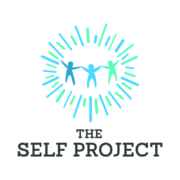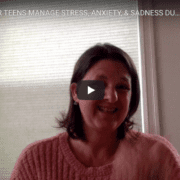Can We Stop Telling Kids We Want to Teach Them to “Manage” Their Emotions?

Language is important. Most of us realize that, but from time to time we still need to examine the kinds of things we say to determine whether we’re sending a message we don’t really mean. The more we do this, the better we get at aligning our values with our actions, and often, it is the catchphrases or soundbites that get popular in a given discipline that need examining. Two examples within the SEL community are “manage emotions” and “calm.”
Both of these have the potential to send the message to students that their emotions are undesirable or misaligned to a given situation. While it is part of our job as parents and educators to help kids identify their emotions, I believe the goal of that is to help them manage their responses and, over time, work to diminish the most distressing and overwhelming thoughts and physical feelings that come with those emotions. But when we tell kids we’re going to help them “manage their emotions,” that says that we’ve decided which emotions are acceptable and desirable and which ones need corralling. Especially for students who have a history of trauma, this means that we’ve identified a certain set of feelings they experience automatically and uncontrollably and determined they ought not to be having them, or at least not with the intensity they are feeling them. That can lead to a great deal of shame and an increased sense that they don’t quite ‘fit.’
Likewise, when we sell SEL as a way to keep one’s classroom “calm” or to “calm” students, we are not acknowledging that many of the most intense feelings kids have lead to passion for learning. My favorite classrooms are the ones where students are having dynamic discussions, physically working through ideas, and expressing joy and wonder. None of those things falls in to the category of “calm.” And for kids who have a strong tendency to learn kinesthetically, “calm” can be devastating. Forcing these students to sit quietly and absorb information almost never works. It takes so much of their bandwidth to simply control their physical bodies that their minds are not available for learning.
To be sure, parents and educators alike are interested in functional classrooms with engaged students whose behaviors adapt to social norms – they aren’t yelling inappropriately or physically acting out against others or otherwise disrupting the educational process. But we need to express to students that what we want is for them to learn to identify their emotions without judging them, examine the knee-jerk responses they often have to those strong emotions that cause distress for themselves or others, and work to find ways to manage the response. Telling them that we want them to learn to manage their emotions indicates that there are a subset of emotions that are generally undesirable that should be tamped down, and that can often feel like gaslighting or lead to a dangerous tendency to hide certain feelings from the adults they are supposed to trust the most.
It may seem overly picky, but for the students who already feel overwhelmed by and shamed for their emotional responses, these two phrases can make things worse. Anything we as adults who care for children can do to fine-tune our language to align with our ultimate goals will be better for all of us.









Leave a Reply
Want to join the discussion?Feel free to contribute!